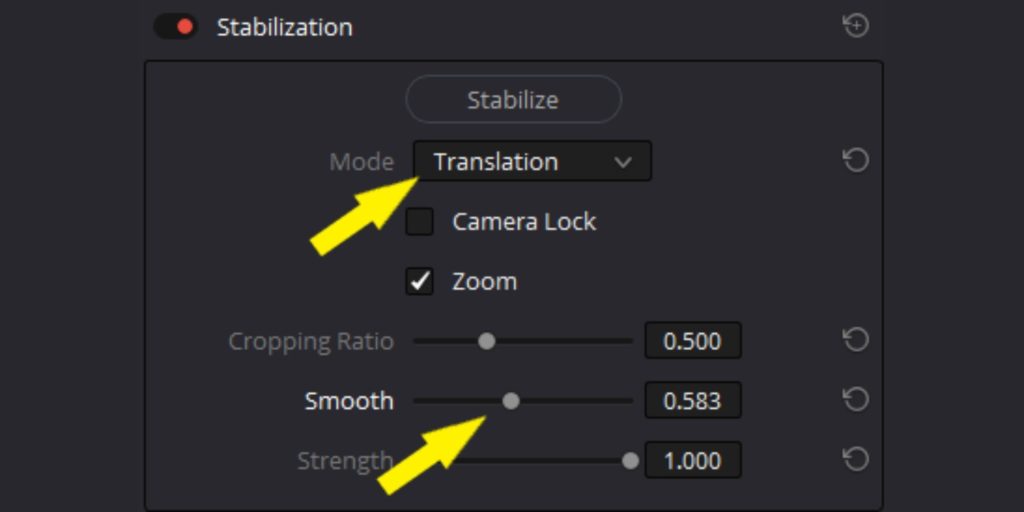


Supposing the blanking artifacts introduced at the edges of the frame are still there, you can easily remove them in the Sizing palette as well. After the analyzing has been completed and you set the stabilization settings, you should go to the beginning of the clip and press the Stabilize button in the bottom left corner of the Tracker palette. You can check Zoom to eliminate the black edges that may appear as a result of the repositioning of the image to reduce the unwanted camera movement. Both parameters control the overall process and dictate how much stabilization is applied to your clip. To fine tune the results from the stabilization process you will need to change the Strong and Smooth settings in advance. Each line of the analyzes corresponds to the different settings of the stabilizing process such as pan, tilt, zoom, and rotation. After the process is finished, the analysis of the clip will appear in the Tracker palette. Inside the Tracker palette you need to push the Track forward button, thus Resolve will automatically analyze the whole shot. Turn off any of the Analyze check boxes that correspond to axes that you don’t want to smooth. There is a second mode in the drop down menu where you can find the Stabilizer. To access the Stabilizer, you should navigate to the Tracker palette.

As with Object tracking you can choose which aspect of motion to stabilize, but this step must be done before the initial image analysis is done. The first step is analyzing the clip the second is choosing the stabilization settings you want, and the last one is clicking the Stabilize button to calculate the result. Image stabilization processing in Resolve consists of three easy steps. In the following tutorial, the filmmaker and colorist Alexis Van Hurkman will show us how to use DaVinci Resolve’s Stabilizer to remove some annoying wobble from your footage. Imagine a situation where you are with a client behind your shoulder, reviewing the color grading you’ve already done and suddenly you stumble upon a shaky footage. Some people are seriously questioning whether the Stabilizer in Resolve performs as good as the Warp Stabilizer in Premiere Pro, for example, however if you’re on the rush, and DaVinci Resolve is your only available option for the moment, this feature is worth trying. One of the less known features of Blackmagic Design’s DaVinci Resolve is the ability to stabilize shaky footage.


 0 kommentar(er)
0 kommentar(er)
